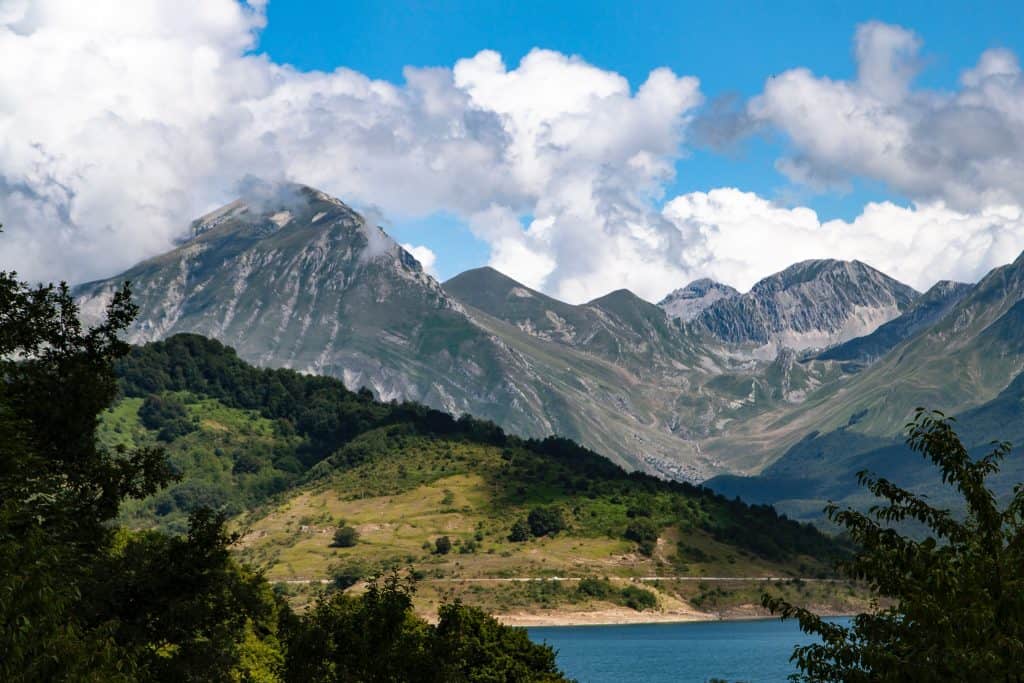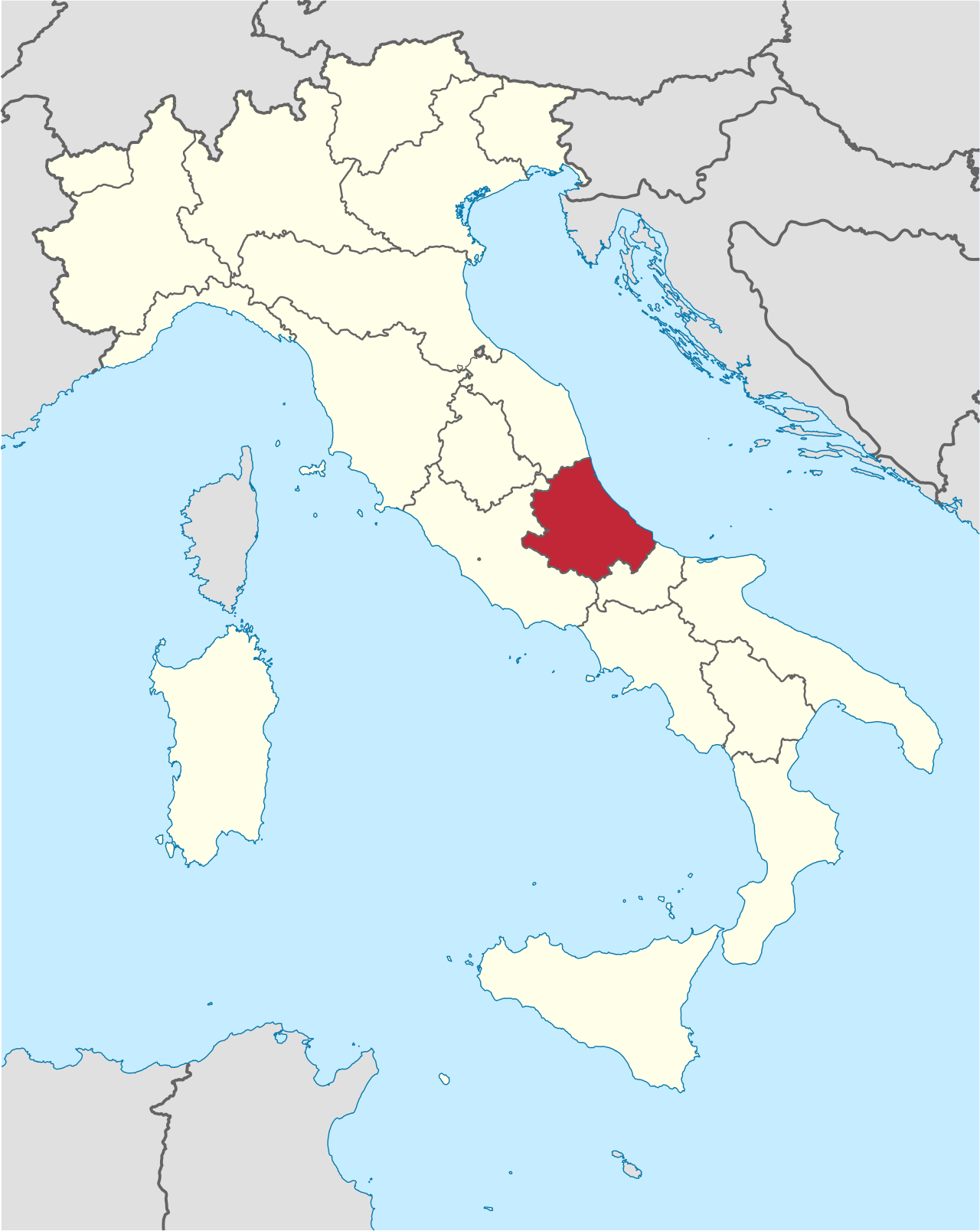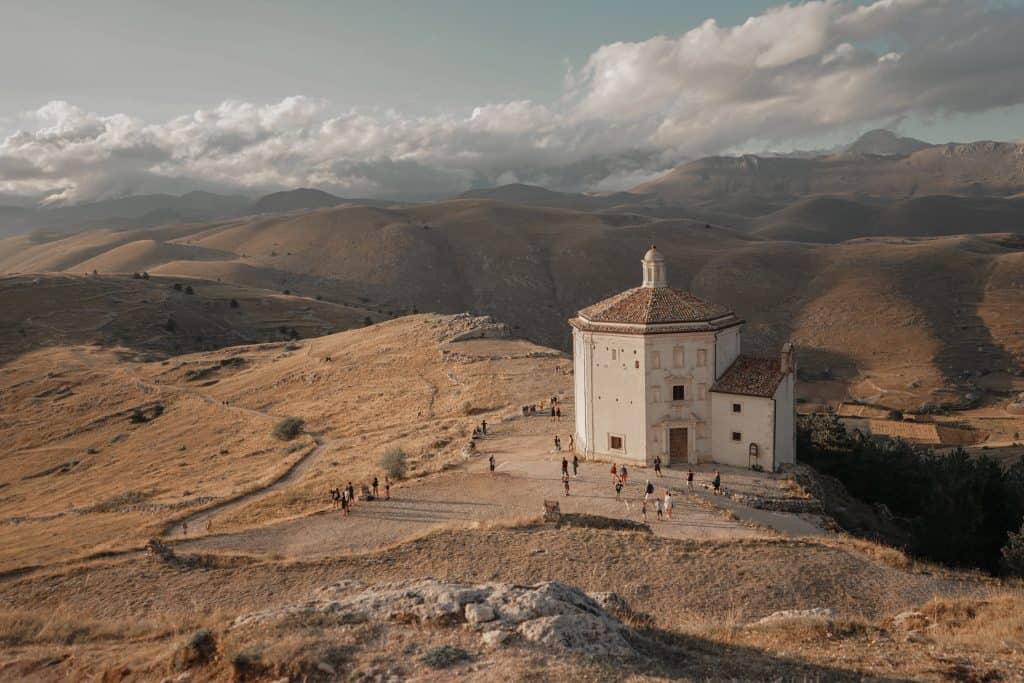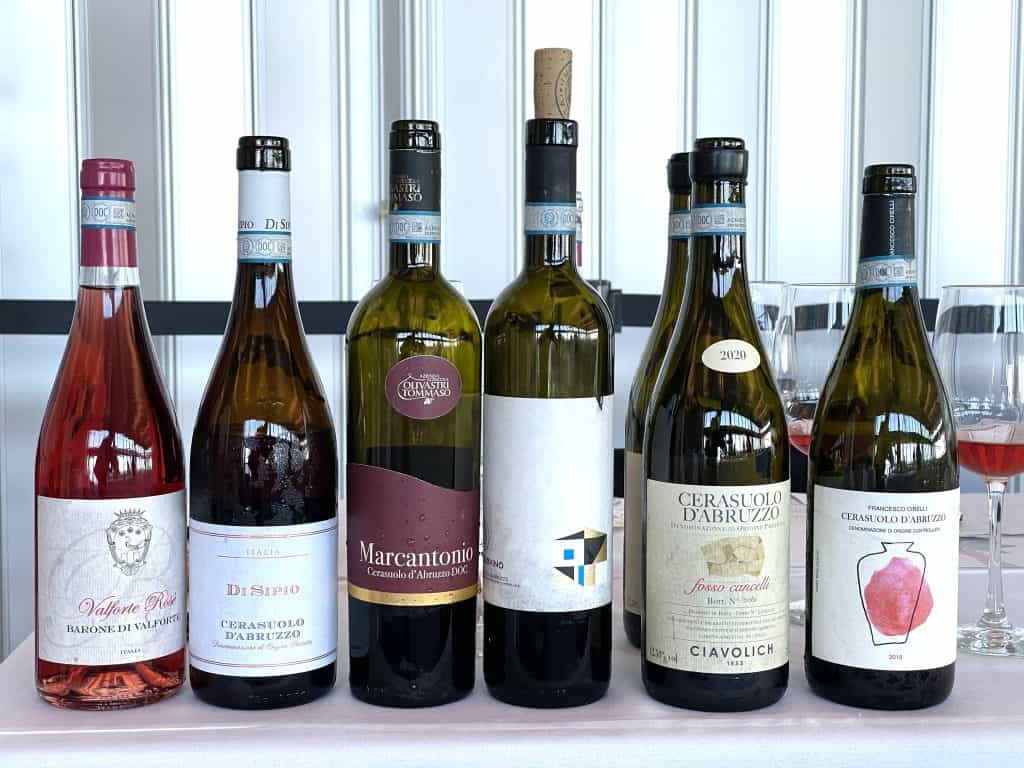Rosé has come a long, long way in America. When I first started writing about wine, it was a depressed category in this country. It needed its own advocacy organization to help wash the (dis)taste of White Zinfandel out of America’s collective imagination, and let people know just what a delicious and versatile wine it could be.
These days we have everything from #roseallday to the Rosé Mansion, and it seems like any pale pink wine with the word Provence on the label somewhere can make you a fortune in sales. America is firmly in love with rosé. And that’s a great thing.
But that doesn’t mean that most wine lovers truly understand the vast and varied world of pink wine that exists out there. In fact, there are all manner of rosés that still fly well below the radar of most wine consumers, even those that are dedicated pink wine fans.
Serious wine geeks have likely heard of Valentini’s famous Cerasuolo d’Abruzzo, but other than that one famous name, one of Italy’s most charming and delicious wines remains quite unknown.
The word Cerasuolo (pronounced chair-ah-swolo) means cherry-colored, and while the shades of this rosé style wine vary from producer to producer, it often ends up more red than pink, and sometimes looks dark enough to be mistaken for a light red.
Make no mistake, however, this wine offers all the delights that folks have finally started to love in rosé, thanks to the long tradition of the grape used to make it, which I would claim achieves its finest expression in Cerasuolo.

The Magic of Montepulciano
For wine lovers beginning their education on Italian wine, one of the most confusing facts they will come across is that a relatively famous wine called Vino Nobile di Montepulciano is not made from the Montepulciano grape and that the grape called Montepulciano is not grown (and may never have been grown) in the town named Montepulciano.

Instead, Montepulciano has a long and storied history as the primary grape of the Abruzzo region of Italy, which sits on the country’s eastern Adriatic coast directly opposite Rome.
According to Ian D’Agata, whose exemplary tome Native Wine Grapes of Italy should be considered the most authoritative word on the subject, Montepulciano has been grown in Abruzzo for at least 250 years, and as best as anyone can tell, originated in the region.
You could say that Montepulciano is the perfect grape for the coastal foothills of Abruzzo that sit between the craggy Apennine mountain range and the Adriatic sea. Or you could say that this dynamic and beautiful landscape has spent the last 250 years perfecting Montepulciano. Both are true. The net result being that Montepulciano is not only the primary red grape of the region, it makes up more than 50% of all the planted acreage in the region and possesses even greater mindshare.
In fact, Montepulciano is Italy’s 4th most-planted grape variety, having expanded from its Abruzzo roots to be grown in Lazio, Marche, Molise, Puglia, Umbria, and has even spread into some areas of Tuscany.
A late-ripening variety, which also tends to ripen unevenly even within a cluster, Montepulciano is also quite sensitive to oidium (aka powdery mildew), though thankfully much less sensitive to both downy mildew and botrytis. Despite some deficits, when farmed carefully, Montepulciano can be quite a dependable grape, provided that you stay within its tolerances for heat (it likes warmer weather, in general) and take care of its water needs.
Abruzzo has figured out how to do all this well, making vast quantities of red wine from the 42,000 acres of Montepulciano grown within its 4 provinces, but mostly in Chieti, which holds nearly 80% of the plantings.
For the last 40 or 50 years, Abruzzo’s 10,000 grape producers, 35 cooperatives, and 250 independent wineries have been best known for producing inexpensive reds (and whites from the Trebbiano grape). With a couple of notable exceptions, the region hasn’t really been thought of as a producer of truly fine wines.
Often called a “workhorse grape” Montepulciano is described in the World Atlas of Wine as “rarely overpriced even if it is highly variable” which might be the perfect definition of damning with faint praise. My experience with bottles of Montepulciano d’Abruzzo has personally borne that out. Other than the spectacular Valentini or the very good Emidio Pepe bottlings, very few have turned my head, and a great many have seemed simply ordinary.
The same cannot be said for Cerasuolo.

The Apotheosis of a Grape
Somehow, when made into a rosé, Montepulciano goes from being a soft, mouth-filling, pleasant grape to being something much more exciting. I’m hard-pressed (pun intended) in the moment to think of another red grape of Montepulciano’s popularity about which I can say with as much confidence is almost always better as a rosé. But that is certainly my experience with Montepulciano.
Because of its rich pigmentation when ripe, Montepulciano requires little or no maceration with the skins to make a rosé. Some producers choose to do that anyway, yielding the more carmine shade of Cerasuolo, while others simply press, and end up with a paler wine, but never quite so pale as the rosés in fashion today. Saignée versions are much less common, most wines having been picked deliberately to become Cerasuolo instead of relying on juice pulled off of fermentations destined for red wine.
Cerasuolo d’Abruzzo was given a DOC status relatively recently, in 2010, despite the fact that farmers in Abruzzo have been making rosé for as long as anyone can remember.
Cerasuolo can be made anywhere in the area delimited for Montepulciano d’Abruzzo. The regulations for being labeled as such are simple: the wine must be at least 85% Montepulciano, it must have been grown below 500 meters of elevation, or 600 meters for a south-facing slope (same as its red sibling), it has to have at least 12% alcohol, and can’t be sold until the first of January following harvest. When wines contain less than 100% of Montepulciano, the remaining 15% can be made up of other local red grape varieties.
Though made in much smaller quantities, the Cerasuolo d’Abruzzo Superiore DOC also exists, the only legal differences between it and the normal Cerasuolo d’Abruzzo are a slightly lower yield in the vineyard, a minimum alcohol level of 12.5%, and a prescribed two additional months of aging. In practice, however, this designation is often used for wines that have seen some time in (usually old) barrels.
Most Cerasuolo d’Abruzzos continue to be fermented and aged in steel, though newer (and some older, innovation-minded) producers are beginning to use concrete and even terra-cotta amphorae on the wine, with some very interesting results.
The best of these wines have a wonderful juicy berry quality and an excellent acidic backbone that is often accompanied by a light tannic grip. Flavors of cherry and pomegranate are common, and while producers will tell you that it is a typical signature for Cerasuolo d’Abruzzo, I only occasionally pick up flavors of almonds or marzipan in some wines.
Presumably because of their excellent acidity, tannins, and the anthocyanins that come with their deeper colors, Cerasuolo d’Abruzzos can age beautifully, letting the primary berry flavors transmute into herbal, preserved citrus and more savory notes. The Abruzzi typically give a four- to seven-year drinking window for these wines, but I suspect that is quite conservative. I’ve certainly had Valentini’s Cerasuolo with 15 or more years of age, but in all things, Valentini can be an exception.
Regardless of when you drink them, Cerasuolo d’Abruzzos are a hidden gem in the now very blingy world of rosé, and I believe the finest expression of what the Montepulciano grape has to offer.
Here are a few that I tasted recently.
Tasting Notes
2020 Barone di Valforte Cerasuolo d’Abruzzo, Abruzzo, Italy
Light ruby in the glass, this wine smells of orange peel, cherries, and dried herbs with a sweet floral perfume. In the mouth, bright cherry and citrus flavors mix with a touch of almond skin. Excellent acidity. 100% Montepulciano, vinified in steel. 13% alcohol. Score: around 8.5. Cost: $10. click to buy.
2020 Nicola Di Sipio Cerasuolo d’Abruzzo, Abruzzo, Italy
Light ruby in the glass, this wine smells of struck match and citrus peel. In the mouth, lightly saline flavors of cherry and citrus peel mix with a touch of Asian pear. Excellent acidity. 100% Montepulciano. Some of this wine spends time in old oak barrels. 13.5% alcohol. Score: between 8.5 and 9. Cost: $18. click to buy.

2020 Olivastri Tommasso “Marcantonio” Cerasuolo d’Abruzzo, Abruzzo, Italy
Light to medium ruby in the glass, this wine smells of apple cider, with a hint of dried cherry, raisins, and brewers yeast. In the mouth, red apple and cherry flavors have decent acidity and a hint of cream sherry and yogurt. 100% Montepulciano fermented and aged in steel.14% alcohol. Score: between 8 and 8.5. Cost: $16.
2020 Tenuta i Fari “Baldovino” Cerasuolo d’Abruzzo, Abruzzo, Italy
Light ruby in the glass with orange highlights, this wine smells of struck match, dried herbs, and orange peel. In the mouth, the wine is quite deliciously saline, with cherry and citrus peel flavors with a touch of marzipan. The salty mouthwatering quality is enhanced by excellent acidity. Long. Delicious. 100% Montepulciano with 4-5 hours of skin maceration, fermented and aged in concrete for 6 months. 13.5% alcohol. Score: between 9 and 9.5. Cost: $8 (yes, $8). click to buy.
2020 Ciavolich Fosso Cancelli Cerasuolo d’Abruzzo, Abruzzo, Italy
Light ruby in the glass with orange highlights, this wine smells of orange peel, a touch of sulfur, and dirty socks that blows off quickly to be replaced with macerated cherries and a lovely floral high note. In the mouth, bright citrusy cherry mixes with tangy plum and redcurrant. Faint wispy tannins. After crushing and destemming, the grapes are left in contact with the skins for 24-36 hours inside concrete tanks, where fermentation occurs using ambient yeasts. Some of the wine is also fermented in terracotta amphorae. Once fermentation is finished, all the wine is transferred to amphorae and aged for a few months. 12.3% alcohol. Score: between 9 and 9.5. Cost: $36. click to buy.
2019 Francesco Cirelli “Anfora” Cerasuolo d’Abruzzo, Abruzzo, Italy
Light garnet in the glass, this wine smells of forest berries, acidophilus, and wet stones. In the mouth, tangy sour cherry, strawberry, citrus peel, and wet stones have a lovely brightness thanks to excellent acidity. Deeply stony, and lovely saline notes. Excellent. Destemmed grapes are put into a press where they sit for a few hours before pressing. The juice is then fermented and aged in terracotta amphorae for one year prior to bottling. The wine is then aged in bottle for one year prior to release. 13.5% alcohol. Score: between 9 and 9.5. Cost: $19. click to buy.

And just because you can’t write a story about Cerasuolo d’Abruzzo without a nod to the inestimable Valentini family who still make one of the world’s greatest rosés even though we lost the visionary Edoardo in 2006….
2014 Azienda Agricola Valentini Cerasuolo d’Abruzzo, Abruzzo, Italy
Pale ruby in the glass with orange highlights this wine smells super funky right out of the bottle, which is why you always decant this wine. After 15 minutes of opening up, it was simply singing with aromas of hibiscus, berries, and exotic flowers. In the mouth, faintly saline flavors of sweet white tea, pomegranate, berries, and dried flowers and herbs have a bright zing and zip thanks to excellent acidity. Long, silky, and regal, this is otherworldly stuff. Score: between 9.5 and 10. Cost: $150. click to buy.
Featured image at top of a vineyard in Val di Foro by maury3001, via Wikimedia Commons.